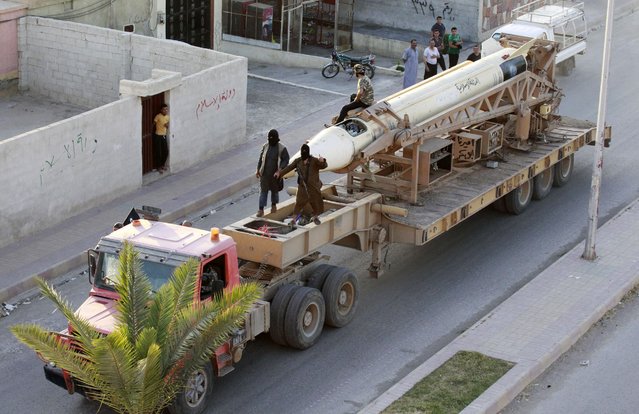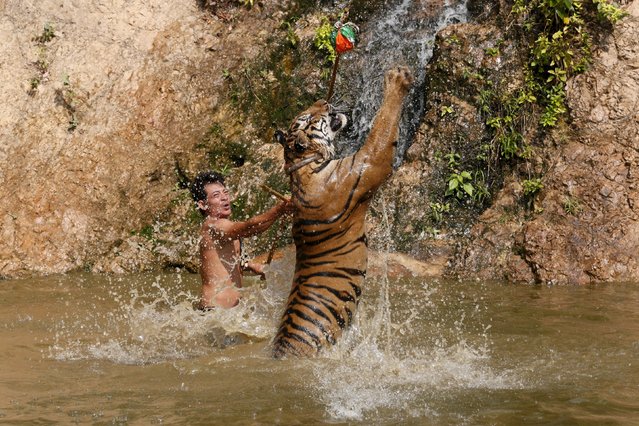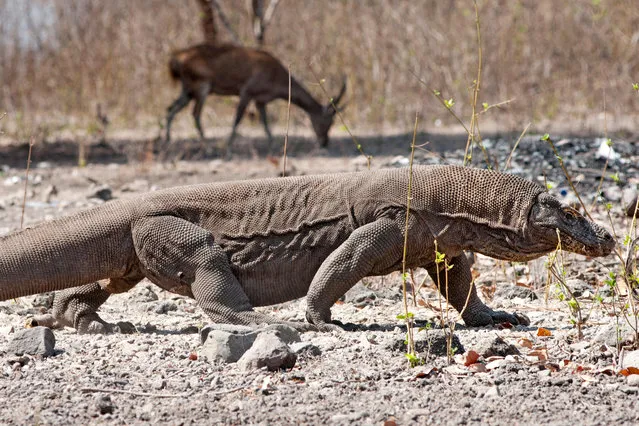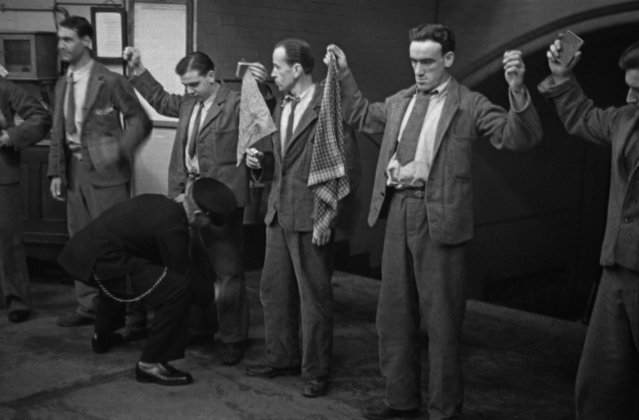
Militant Islamist fighters take part in a military parade along the streets of Syria's northern Raqqa province June 30, 2014. The fighters held the parade to celebrate their declaration of an Islamic “caliphate” after the group captured territory in neighbouring Iraq, a monitoring service said. The Islamic State, an al Qaeda offshoot previously known as Islamic State in Iraq and the Levant (ISIL), posted pictures online on Sunday of people waving black flags from cars and holding guns in the air, the SITE monitoring service said. (Photo by Reuters/Stringer)
01 Jul 2014 12:41:00,post received
0 comments







